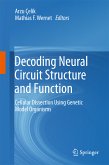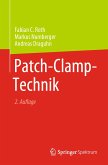Dieser Download kann aus rechtlichen Gründen nur mit Rechnungsadresse in A, B, BG, CY, CZ, D, DK, EW, E, FIN, F, GR, HR, H, IRL, I, LT, L, LR, M, NL, PL, P, R, S, SLO, SK ausgeliefert werden.
"The authors combine their expertise in diverse areas of molecular genetics to produce a general scope for each disease. Additionally, the corresponding clinical features are briefly discussed, and genotype/phenotype correlations are outlined. The overall result is a useful and concise review which will be of interest to researchers in molecular biology and human genetics, as well as professionals in medicine looking to obtain insights into the ever expanding fields of unstable repeat disorders." (Laura E. Machuca-Tzili, Human Genetics, Vol. 125, June, 2009)









